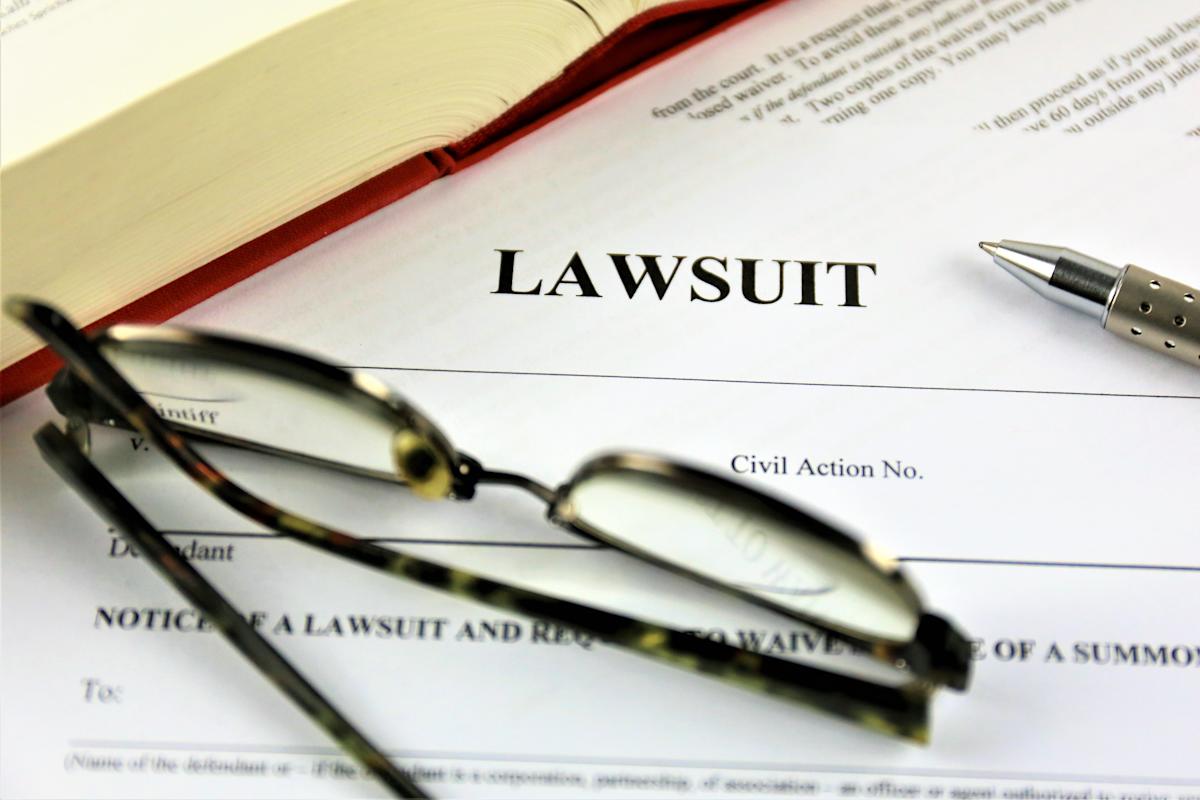How Does a Mass Tort Lawsuit Work?

Every year, millions of Americans are involved in mass tort litigation for injuries caused by defective medical implants, medications, cleaning products, and second-hand pollution from manufacturing. These lawsuits often result in some of the largest injury settlements in courtrooms across the country. If victims receive compensation in these lawsuits, it is usually for hundreds of thousands or millions of dollars.
Injury claims involving multiple injured individuals (i.e., “plaintiffs”) are mass tort lawsuits. To have grounds for a mass tort injury lawsuit, the plaintiff’s representative must establish that the defective product caused their client’s injuries and that the manufacturer was negligent in its production. Pursuing compensation via a mass tort lawsuit is a long-term process; for example, most mass tort lawsuits take months or even years to reach a final resolution. Learning how mass tort lawsuits work can help victims and their families prepare for the months or years ahead.
What is the Difference Between Mass Tort and Class Action?
While mass tort claims and class action lawsuits both represent multiple accident victims, there are some important differences in how these cases are handled and the legal philosophies governing them. The main difference between a mass tort case and a class action lawsuit is that, in a class action lawsuit, one lawsuit is filed representing all victims. A mass tort case, however, allows each injured plaintiff to file their own claim. These separate claims are then handled by a single judge. The mass tort litigation process benefits both the court and the plaintiffs by simplifying the process while still allowing victims to seek compensation for their own damages.
Steps of a Mass Tort Lawsuit
What should you expect when starting a mass tort lawsuit? Because of the significant number of parties involved (the multiple plaintiffs and the individuals that make up the defense), mass tort lawsuits differ from typical personal injury lawsuits in a few key areas. The complexities of mass tort claims mean that the case is broken down into separate, discrete processes. The following steps outline the main elements of mass tort litigation and what to expect at each point in the process.
Contact a Mass Tort Attorney
If you or a loved one has been injured by environmental pollution, product malfunction, or corporate negligence, you should contact a qualified mass tort attorney as soon as possible to explore your right to fair compensation. It is important that you do not wait too long; in most states, accident victims have up to two years from the date of injury to file an injury lawsuit. If your attorney establishes your eligibility, they can help you join an ongoing mass tort lawsuit against the company, entity, or business in question. In many cases, a team of attorneys works together to separate the various plaintiffs involved in the case.
Discovery/Investigation
The next step in the mass tort litigation process is discovery and investigation. Mass tort attorneys must evaluate the claims of each plaintiff in the case, reviewing medical bills, witness statements, and official medical diagnoses. Because establishing the defendant’s fault is crucial in ensuring a successful case, the discovery/investigation phase is essential. Without sufficient evidence to convince the jury that the defendant’s products injured the plaintiffs, it is unlikely the plaintiffs will receive the compensation they need to recover their damages.
Identifying Uniformity of Injuries
To file a mass tort lawsuit, your attorney must establish not only that multiple people were injured due to the defendant’s negligence or omission but that these injuries have taken on common characteristics. For example, if multiple victims have developed cancer after using a manufacturer’s weedkiller, the mass tort attorney would need to establish that these cancers a) are of the same kind and b) developed after contact with the weedkiller (in other words, the victim did not previously have cancer) before filing a mass tort case against the manufacturer. If there is a wide diversity of injuries, the defense may argue that the lack of uniformity invalidates the plaintiffs’ claims.
Bellwether Trials
“Bellwether trials” are an important step in the initial stages of the trial process. These trials help the plaintiffs’ lawyers gauge their expectations for the success of the remainder of the mass tort litigation. A “bellwether trial” is an early jury trial for some of the most serious cases involved in the mass tort claim. If the jury rules in favor of the defense, victims and their attorneys evaluate whether or not it is worth the time and expense to take the other cases to trial. If the jury rules in favor of the plaintiffs, trial lawyers are able to establish a precedent for the rest of the injury claims that have yet to be tried.
Trial
Once all of the above steps have been put into motion, the actual trial begins. If the bellwether trials resulted in favorable verdicts for the plaintiffs, the other victims involved in the case will often seek the same damages in trial or settle outside of court. If they choose to take their case to court, the defendant will be tried by a judge and jury. Mass tort injury trials are a complex process divided into individual steps. Before your trial begins, your attorney will help you to prepare for each step of the trial process.
Jury Selection
Before the trial begins, a panel of unbiased jurors will be selected. Jury selection is made randomly, but if the representative of the plaintiffs or defense takes issue with a juror, they may have the opportunity to challenge the selection. The right to a jury trial is only made possible if the jury has no vested interest in the outcome of the trial and will be able to review the facts of the case objectively and make a fair judgment.
Opening Statements
At the start of the trial, the attorneys for the plaintiff and the defense will give their opening statements. Opening statements are important for providing a summarized version of the main points that each side will argue throughout trial proceedings. These statements are meant to function as a broad overview of the main facts of the case; the details of each side’s argument will be further developed in the presentation of cases.
Presentation of Cases
The most important moment of the trial is the presentation of cases. The evidence that representatives gathered during the discovery phase will now be presented to the court. This is the period where injury attorneys can present definitive proof that their client (i.e., the group of plaintiffs in the mass tort lawsuit) was injured due to the defendant’s negligence (i.e., a corporation that sold defective medication, products, or devices). During the presentation of cases, attorneys may also choose to examine witnesses and offer their objections.
Witness Examinations
The plaintiffs and the defendant will have the opportunity to call witnesses to testify. These witnesses are typically experts who can attest to the scientific facts of the case. An expert witness can be the deciding factor in a mass tort trial, particularly as the plaintiffs’ attorney attempts to prove the defendant’s liability for mass injury. For example, a credible scientist who can attest to the dangers inherent in a common household cleaner would be an invaluable witness and may sufficiently prove to the jury that the household cleaner was the cause of the plaintiff’s injuries.
Objections
Attorneys for both the plaintiffs and the defense have the right to object during the presentation of cases and witness examinations. They may object to information that is irrelevant or harmful to their client’s case. For example, there are “leading” objections, “speculation” objections, or “hearsay” objections. When an attorney offers an objection, the judge may overrule or sustain the objection. If the judge sustains the objection, the opposing attorney must change their line of questioning.
Closing Arguments
At the end of the trial, the representatives of both the plaintiffs and defense will be given a chance to make their closing arguments. Because mass tort trials are often long and involve complicated presentations of information, the purpose of closing arguments is to provide a clear summation of the case before the jury is released.
Jury Instructions
Before the jury is dismissed for deliberation, they will be given their instructions. The presiding judge gives these instructions to guide the jury and provide procedural instructions. Additionally, these instructions (sometimes referred to as “jury charges”) will provide the jurors with the necessary legal context to make a reasonable judgment on the case.
Jury Deliberations
Once they have been given their instructions, the panel of jurors will move to the jury room to begin reviewing the evidence and arguments provided by the plaintiffs and defendants. While they deliberate, no one is allowed in the jury room. This privacy is crucial in ensuring the jury is not swayed in their deliberation by outside parties. Additionally, there is no time limit on jury deliberation. The jury can take as long as necessary to come to their verdict, whether that is an hour or a day. Once the jurors have come to a decision, they will signal to court officials that they are ready to present their verdict.
Verdict
After the jury has finished deliberation and come to an agreement, their verdict will be announced. Each juror will be required to sign a verdict form before the verdict is read to the court. The court clerk will read the verdict; if the judgment against the defendant is guilty, it will be the judge’s duty to pass a sentence. In mass tort trials, these sentences generally involve the payment of damages for victims’ financial, physical, and emotional damages.
Post-Trial Motions
Both parties involved in the lawsuit will have the opportunity to appeal the jury’s decision. If the verdict is appealed, the mass tort case will go to an appellate court. In some cases, even if the defendant in a case initially settles with victims, the case may be thrown out after an appeal, and the defendant will no longer be required to compensate the remaining victims. For that reason, if your mass tort claim is appealed by the defendant, you should consult with an attorney experienced in representing plaintiffs in appellate court.
Settlement/Resolution
The majority of mass tort claims are settled before making it to trial. Settling the case helps businesses and/or corporate entities avoid expensive, lengthy, and public trials. Similarly, settling out-of-court can benefit victims by ensuring they receive compensation as quickly as possible. If the mass tort claim does go to trial, the resolution may take months or years, depending on the complexity of the case at hand.
Recent and Ongoing Mass Tort Lawsuits
In the past few years, a few manufacturers have faced national or global mass tort litigation and paid out billions of dollars in settlements. A few of these mass tort cases are ongoing and may result in “long tail” litigation over the coming years or decades. If you believe you have been injured by one of the following products, contact the mass tort litigator for the case to learn more.
In 2021, Bayer settled 98,000 lawsuits claiming that their glyphosate-based weedkiller (Roundup) caused victims to develop lymphoma. However, Bayer is still in the process of settling thousands more Roundup injury claims and is attempting to appeal the initial ruling in the plaintiffs’ defense.
3M was sued for hearing loss injuries caused by their defective Combat Arms Earplugs by over 270,000 plaintiffs. The average damages awarded to victims in the 3M injury claims amount to $4 million. By the time these claims were resolved in 2022, 3M had paid $300 million in damages to 14 different plaintiffs.
Teva Pharmaceuticals is another company facing litigation for damages caused by defective products. Due to a defective design in their product (Paragaurd IUD), thousands of victims were injured when the device broke during removal. In some cases, the broken pieces caused severe injuries, surgical removals, intrauterine bleeding, and infertility. This mass tort case is still in the early stages: the bellwether trials aren’t scheduled until January of 2024.
Multiple manufacturers of surgical hernia mesh have been sued for defective products. Defective hernia mesh has caused significant injuries, including bowel obstruction, adhesion, and infection. Approximately 15,000 plaintiffs are involved in mass tort lawsuits against three separate companies (Bard, Ethicon, and Atrium). So far, these mass tort lawsuits have resulted in settlements paid to victims and are expected to gather more cases in the coming years.
Legal Resources for Victims
If you have been injured due to environmental pollution, toxic chemicals in household products, dangerous medical implants, or other forms of mass tort injury, you may be unsure how to proceed with seeking compensation for your injuries or how to find a mass tort litigator for your claim. If you are looking for legal, financial, or informational resources throughout the mass tort litigation process, the following organizations can help.
Drugwatcher.org
Drugwatcher is an organization that was founded to “inform the public about dangerous drugs and medical devices that can have serious, life-impairing side effects.” They keep up-to-date pages that provide information regarding multiple ongoing mass tort lawsuits (including those against Elmiron, 3M, Teva Pharmaceuticals, and more). If you have been injured by any of the medications or medical devices discussed on Drugwatcher’s website, their team of attorneys can help provide you with the resources you need to join the ongoing lawsuit. To learn more, fill out Drugwatcher’s contact form.
Mass Tort Trial Lawyers
Representing plaintiffs in a mass tort lawsuit requires an attorney specializing in mass tort injury law. The Association of Mass Tort Trial is an organization of attorneys that offers professional development in mass tort litigation to young attorneys and makes reference materials available to the public. The resources on their site include reference materials and a database of mass tort attorneys across the nation. To find a mass tort lawyer in your state, visit the association’s Find a Lawyer page.
United States Consumer Product Safety Commission
Dangerous and defective products should be removed from the marketplace as soon as possible. The U.S. Consumer Product Safety Commission (CPSC) is an independent federal regulatory agency that protects the public from dangerous consumer products. Before producers and manufacturers can be held financially liable, these products should first be recalled, and the public alerted to the potential risks. To report a dangerous consumer product to the CPSC, visit saferproducts.gov or call (800) 638-2772 to reach the toll-free hotline.
Expertise.com StaffAuthor
Step into the world of Expertise.com, your go-to hub for credible insights. We don't take accuracy lightly around here. Our squad of expert reviewers, each a maestro in their field, has given the green light to every single article you'll find. From rigorous fact-checking to meticulous evaluations of service providers, we've got it all covered. So feel free to dive in and explore. The information you'll uncover has been stamped with the seal of approval by our top-notch experts.


![Mass Tort Lawsuit Timelines and Outcomes: What To Expect [2023] DUP IMAGE](https://images.ctfassets.net/k00sbju4hbzq/2sJ6vpBxbkuRa0riSN98dm/34b0353b8eff400e185a2ad51f27b1a1/Depositphotos_226254218_XL.jpg?fit=fill&w=384&q=75)

